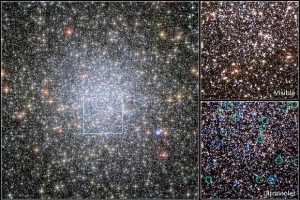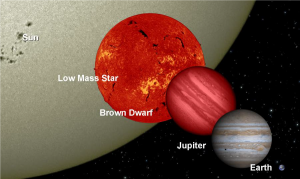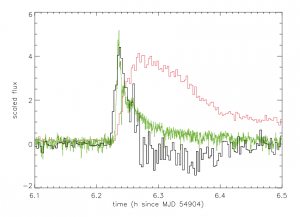Astronomical observations in the ultraviolet (UV) at wavelengths below ~320 nm are not possible from the ground because of atmospheric extinction by ozone. However, at a height of 40 km, observations are feasible down to ~200 nm. Only in the range 240-260 nm, residual ozone reduces the transmission to ~20%. Therefore, a balloon-borne telescope enables UV observations that are usually only possible with space-based telescopes.
The Stratospheric Ultraviolet Demonstrator of an Imaging Observatory (STUDIO) is the ESBO-DS prototype comprising a 50cm telescope and a photon-counting microchannel plate (MCP) detector that shall perform observations in the 200-300 nm band. Access to this band is scientifically rewarding in many fields of astrophysics. STUDIO will be an imaging instrument with a field of view of 30’ x 30’. We are highlighting two science cases, namely 1.) The search for variable hot compact stars, and 2.) The detection of flares from cool dwarf stars.
1.) Search for variable hot compact stars

Left: The globular cluster 47 Tuc as seen by the Hubble Space Telescope. Right: Faint, hot white dwarfs in this dense field are identified by comparing visible light and UV images (image credit: NASA).
In the UV, hot stars can be studied even in dense stellar populations. Hot and compact stars are the rather short-lived end stages of stellar evolution. They comprise the hottest white dwarfs (WDs) and hot subdwarfs. A significant fraction of them show light variations with periods ranging from seconds to hours. Among them are diverse types of pulsators, which are important to improve asteroseismic models. Others are members of ultracompact binaries (e.g., WD+WD pairs) and are strong sources of gravitational wave radiation and crucial calibrators for the future space mission eLISA. They are also regarded as good candidates for the progenitors of thermonuclear supernovae. Furthermore, compact binaries are formed via common envelope evolution and are important to study this poorly understood phase of binary evolution.
Hot compact stars have so far been studied predominantly at high Galactic latitudes. Due to their very blue colours they stick out in old stellar populations like the Galactic halo. However, the density of stars at high Galactic latitudes is rather small and those objects therefore very rare. Due to the 1000-times higher stellar density, the disc should contain many more of those objects. Searches in the Galactic plane are desirable but the identification of these faint stars is hampered by the dense, crowded fields. But not so in the UV band. The hot stars are much easier to detect there, because their emitted flux is increasing towards the UV, while the flux of the majority of other stars decreases because of their lower temperatures. Surveying the Galactic plane with a UV imaging telescope will uncover many new variable objects.
2.) Detection of flares from cool dwarf stars

Relative size of a low-mass flare star (image credit: NASA).
Red dwarf stars (spectral type M) are hydrogen-burning main sequence stars like our Sun, but less massive, cooler and less luminous. The large majority of the stars in our Milky Way belong to this group. Red dwarfs emit most of their radiation in the visible and near-infrared wavelength regions. One characteristic phenomenon is the occurrence of flares that are stochastic brightness outbursts resulting from reconfigurations of the stellar magnetic field.

A flare observed from our nearest-neighbour star Proxima Centauri. Green: optical light, red: X-rays (from Fuhrmeister et al. 2011; A&A 534, A133).
During such flares, these normally faint stars become much brighter for the duration of minutes. A strong emission line of ionized magnesium (Mg II) at 280 nm, covered by the STUDIO instrument, can carry up to 50% of the near-UV flux during flares. Up to now, no systematic monitoring of “flare stars” exists. Consequently, the flare occurrence rate is unknown as well as the flare energy number distribution. Particularly interesting for the study of the physics of flares is their multi-wavelength behaviour (time lags, relative energy in different bands), however, only a few simultaneous UV and optical observations exist. STUDIO enables such observations by continued monitoring (over hours, or multi-epoch) of fields or by focusing on prominent objects.
